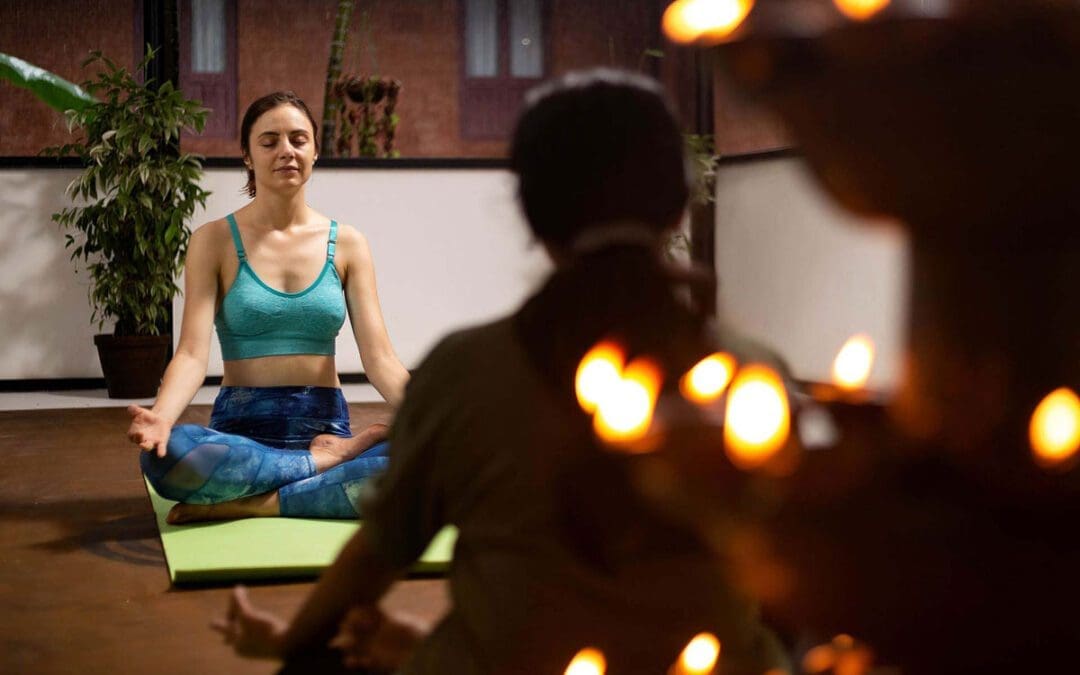In today’s fast-paced world, the need for self-care, relaxation, and spiritual nourishment has never been greater. This is where yoga retreats in Kerala come in – a haven for people seeking a rejuvenating escape from their routines. Planning a Best yoga retreat in Kerala is not just about finding a beautiful location and teaching yoga; it’s a comprehensive process that involves careful consideration, attention to detail, and a deep understanding of your participants’ needs.
In this guide, we’ll take you through the essential steps to craft an unforgettable yoga retreat experience that leaves a lasting impact.
Why Plan a Yoga Retreat?
Yoga retreats offer a unique opportunity for individuals to disconnect from their busy lives, immerse themselves in nature, and deepen their yoga practice. Beyond the physical benefits of yoga, retreats provide a space for mental and emotional healing. They allow participants to unplug, recharge, and gain insights into their own well-being. As a retreat organizer, you have the privilege of facilitating this transformative journey and making a positive impact on people’s lives.
Yoga Retreat Planning
Defining Your Retreat’s Purpose: Start by clarifying the intention behind your retreat. Is it focused on relaxation, mindfulness, personal growth, or a combination of these? Having a clear purpose will guide all your subsequent decisions.
Setting Clear Goals and Objectives: Outline what you want participants to take away from the retreat. Whether it’s improved yoga skills, a sense of inner peace, or new friendships, these goals will shape your retreat’s structure.
Determining Retreat Length and Dates: Decide on the duration of your retreat and the dates that work best for your target audience. Consider seasons, weather, and any local events that might impact attendance.
Budgeting for Your Yoga Retreat: Creating a realistic budget is crucial. Consider venue costs, accommodations, meals, transportation, marketing, and unforeseen expenses. A well-planned budget ensures you can provide a quality experience without financial stress.
Retreat Venue Selection – Yoga retreat venue hire in India
Choosing the Ideal Retreat Location: The location sets the tone for your retreat. Whether it’s a serene mountain retreat, a tranquil beachside haven, or a secluded forest getaway, the surroundings should align with your retreat’s purpose.
Factors to Consider while choosing retreat venue hire in India: Accessibility, safety, and natural beauty are paramount. Also, consider the distance from airports or major cities, as well as local attractions that participants might want to explore.
Evaluating Accommodation Options: The comfort of your participants should be a top priority. Choose accommodations that range from budget-friendly to luxurious, catering to different preferences.
Amenities and Facilities for Participants: A well-equipped yoga space, meditation areas, comfortable lounges, and outdoor spots for relaxation are essential. Additional amenities like spa facilities or nature trails can enhance the overall experience.
Aligning Venue with Retreat Theme: If your retreat has a specific theme, ensure the venue’s atmosphere and ambience align with it. This cohesiveness enhances the immersive experience for participants.
Group Retreat Organisation
Identifying Your Target Audience: Understand the demographics, interests, and needs of your potential participants. This knowledge will guide your marketing strategies and program design.
Marketing and Promotion Strategies: Utilize social media, email marketing, and collaborations with yoga influencers to spread the word. Highlight the unique aspects of your retreat to attract the right audience.
Managing Registrations and Inquiries: Streamline the registration process with an easy-to-navigate online system. Promptly respond to inquiries and provide all necessary information to build trust with potential participants.
Communication with Participants: Regularly engage with registered participants through pre-retreat emails, answering their questions, and sharing relevant information. This builds anticipation and a sense of community.
Preparing Participants for the Retreat Experience: Provide a detailed pre-retreat guide covering packing lists, daily schedules, and any required preparations. This helps participants feel confident and prepared for the journey ahead.
Retreat Logistics
Transportation and Travel Arrangements: Provide clear instructions for reaching the retreat location, including options for flights, transfers, and local transportation.
On-site Logistics and Arrangements: Efficiently manage check-ins, room assignments, and any special requests. Having a well-organised system minimizes confusion and stress.
Meal Planning and Dietary Considerations: Cater to various dietary preferences and restrictions. Collaborate with the venue’s kitchen to create nourishing and delicious meals that align with the retreat’s goals.
Health and Safety Measures: Prioritise the well-being of your participants. Have a first aid kit on hand, communicate emergency procedures, and ensure the venue meets safety standards.
Itinerary and Daily Schedule: Strike a balance between structured activities and free time. Design a schedule that includes yoga sessions, workshops, relaxation periods, and optional activities.
Retreat Program Design
Crafting a Holistic Retreat Program: Design a program that encompasses different aspects of well-being – physical, mental, emotional, and spiritual. This holistic approach enriches the experience.
Balancing Yoga Sessions and Free Time: While yoga is central, participants also value downtime to reflect, explore, and connect with others. Allocate enough free time within the schedule.
Incorporating Workshops and Activities: Offer workshops related to yoga philosophy, meditation, mindfulness, or other wellness practices. These sessions deepen participants’ understanding of the retreat’s themes.
Inviting Guest Instructors or Speakers: Enrich the program by inviting experienced guest yoga instructors, wellness experts, or motivational speakers to share their insights.
Fostering Community and Connection: Create opportunities for participants to connect and bond. Group activities, bonfires, or storytelling circles can foster a sense of community among participants.
Creating a Memorable Experience
Personal Touches and Special Moments: Infuse personal touches into the retreat, like handwritten notes, welcome gifts, or surprise activities that resonate with the participants.
Mindful Attention to Details: From the decor to the ambience, pay attention to the small details that enhance the overall experience. A thoughtfully curated environment contributes to participants’ immersion.
Participant Feedback and Flexibility: Regularly gather feedback to gauge participant satisfaction and make necessary adjustments. Flexibility in adapting to unexpected situations ensures a smoother experience.
Capturing Memories (Photography and Keepsakes): Hire a photographer to capture candid moments during the retreat. Provide participants with photo souvenirs or keepsakes that remind them of their experience.
Post-Retreat Follow-Up
Gathering Participant Feedback: Send out post-retreat surveys to gather insights on what went well and areas for improvement. This feedback is invaluable for refining future retreats.
Continuing the Retreat’s Impact: Encourage participants to continue their yoga practice and mindful habits beyond the retreat. Share resources recommended reading, and online communities to facilitate this.
Building a Community Beyond the Retreat: Create online groups or forums where participants can stay connected, share experiences, and support one another’s journeys.
Reflection and Lessons Learned: Take time to reflect on the entire planning process. Identify successes, challenges, and lessons learned that will inform your approach for future retreats.
Conclusion
Planning the Best yoga retreat in Kerala is a transformative journey in itself. From defining the purpose to creating a seamless experience, every step contributes to the overall impact on participants. By paying attention to details, embracing flexibility, and fostering a sense of community, you’ll craft a retreat that leaves a lasting imprint on the minds and hearts of those who attend.

